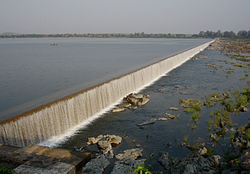
Himroo is a fabric made of silk and cotton, which is grown locally in Aurangabad. Himroo was brought to Aurangabad in the reign of Mohammad Tughlaq, when he had shifted his capital from Delhi to Daulatabad, Aurangabad. The word himroo originated from Persian word Hum-ruh which means 'similar'. Himroo is a replication of Kinkhwab, which was woven with pure golden and silver threads in former times, and was meant for the royal families.
Himroo uses Persian designs, and is very characteristic and distinctive in appearance. Himroo from Aurangabad is in demand for its unique style and design. Some historians believe that Himroo was the innovation of local craftsmen with very little Persian influence.



